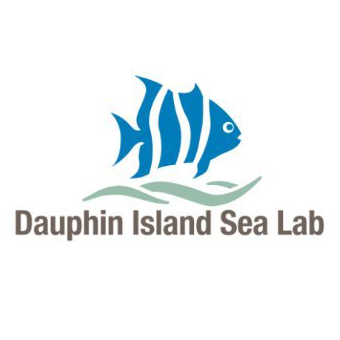Home » Alabama Zoos »
101 Bienville Boulevard, Dauphin Island, AL 36528
Located on a picturesque 35-acre campus along the Gulf of Mexico, Mississippi Sound, and Mobile Bay, the Dauphin Island Sea Lab is Alabama's premier marine science education and research laboratory. This esteemed institution concentrates on providing exceptional marine science education, fostering excellence in research, and shaping effective coastal zone management policy.
The Dauphin Island Sea Lab is home to the Estuarium, an impressive facility that features 31 aquariums totaling over 30,000 gallons. The 10,000 square foot Exhibit Hall houses an array of fascinating marine life, with more than 100 species on display. Visitors can experience the extraordinary biodiversity of the region and learn about the intricate ecosystems found in the Gulf of Mexico and its surrounding waters.
Living Marsh Boardwalk, Estuarium ,sting ray touch TouchTank, Food, Marine Science High School Course, Day Camps, Overnight Camps, interactive exhibits, visual exhibits, five-minute walk from Historic Fort Gaines and the Mobile Bay Ferry
Gift Shop, Food at May's Cafe
Summer: Mon-Sat 9am-6pm
Sun 12-6
Winter:Mon-Saturday 9am to 5pm
Sunday 1:00 pm to 5:00 pm
Nestled along the Gulf Coast of Alabama lies the Dauphin Island Sea Lab (DISL), a renowned marine research and education institution. Established in 1971, the DISL has dedicated itself to the pursuit of understanding coastal and marine ecosystems, as well as providing world-class educational opportunities to students, researchers, and the general public. Over the years, the DISL has gained a reputation for excellence in research, education, and outreach initiatives, propelling Alabama into the spotlight as a hub for marine science.
The origins of the Dauphin Island Sea Lab can be traced back to a collaborative effort by several Alabama universities, including the University of South Alabama, Auburn University, and the University of Alabama. Their shared vision was to create a centralized facility where students and researchers could study the diverse marine ecosystems of the Gulf of Mexico. The Alabama State Legislature supported the idea, and thus the DISL was born, with its first building constructed on the grounds of the historic Fort Gaines.
Throughout its history, the DISL has grown exponentially in terms of its facilities and scope of work. Today, the campus boasts modern research facilities, classrooms, dormitories, and even a public aquarium – the Estuarium. The Estuarium showcases the unique aquatic habitats found in the Mobile-Tensaw River Delta, Mobile Bay, the Barrier Islands, and the Gulf of Mexico. It serves as an interactive learning center where visitors can explore the wonders of these coastal ecosystems.
The educational programs at the Dauphin Island Sea Lab cater to a wide range of audiences. These include K-12 students, undergraduate and graduate students, teachers, and the general public. From summer camps for kids to university-level courses, the DISL provides engaging and immersive experiences that foster a deep appreciation and understanding of marine science. In addition, the DISL’s teacher-training workshops empower educators with the tools and knowledge necessary to incorporate marine science into their own classrooms.
A significant aspect of the Dauphin Island Sea Lab’s mission is the promotion of groundbreaking research. The DISL’s interdisciplinary approach enables researchers to tackle complex questions about the health and function of marine ecosystems. This research has led to important discoveries and publications, addressing topics such as climate change, fisheries management, water quality, and invasive species.
Collaboration is at the heart of the DISL’s research endeavors. The institution regularly partners with other organizations, both nationally and internationally, to advance marine science. The DISL’s relationship with the Gulf of Mexico Alliance, the National Oceanic and Atmospheric Administration (NOAA), and the National Science Foundation (NSF) are just a few examples of these vital partnerships that enable the institution to broaden its impact and achieve its goals.
The Dauphin Island Sea Lab also places a strong emphasis on community outreach and engagement. Through public events, workshops, and presentations, the DISL promotes awareness of critical marine and coastal issues. The DISL’s outreach efforts aim to inspire responsible stewardship of marine resources and foster a deeper understanding of the connections between humans and the environment.
In conclusion, the Dauphin Island Sea Lab in Alabama is a shining example of a successful marine research and education institution. Through its rich history, cutting-edge research, and commitment to education and community engagement, the DISL continues to make a profound impact on the understanding and preservation of the Gulf of Mexico’s coastal ecosystems. The DISL’s legacy is not only one of scientific achievement but also of inspiring generations of marine scientists and stewards to carry on its vital work.

